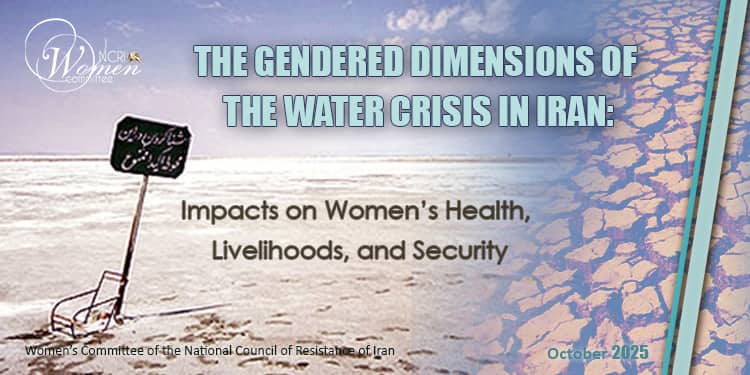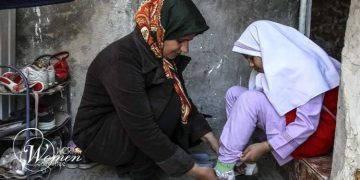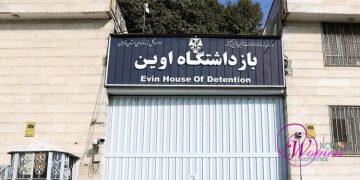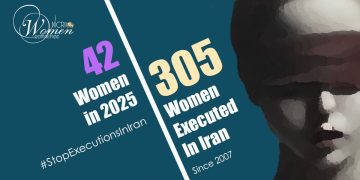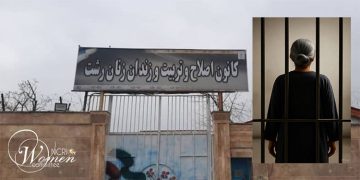How Iranian Women Shoulder the Heavy Burden of a Deepening Crisis
The water crisis in Iran has moved far beyond a simple environmental issue — it has become a humanitarian, ecological, and economic disaster.
While at first the problem seemed to be the result of drought and declining rainfall, its true causes ran much deeper: entrenched corruption and mismanagement at the heart of the ruling establishment. Until these systemic roots are addressed and removed, Iran’s present — and its future — will only become more precarious.
A significant number of researchers and international observers emphasize that 70 to 80 percent of the current crisis stems from mismanagement, unsustainable policies, lack of transparency, and corruption. As one report notes, “Iran’s water crisis is not a crisis of resources; it is a crisis of decisions—decisions that have made the land thirstier and the future darker. This crisis, alongside the erosion of public trust in governance, is a symptom of structural and managerial failure.” (Newsweek, August 1, 2025; The Times, December 8, 2022; Reuters, April 27, 2021)
Field reports from various districts of Tehran indicate a severe decline in water pressure, to the extent that even residents on the ground floors of buildings are deprived of access to drinking water. In a public statement, the Tehran Regional Water Company urged citizens to use domestic pumps and storage tanks to “strengthen water pressure,” effectively shifting the burden of water supply onto the people, many of whom lack the financial means to afford such equipment. (Ebtekar, July 21, 2025)
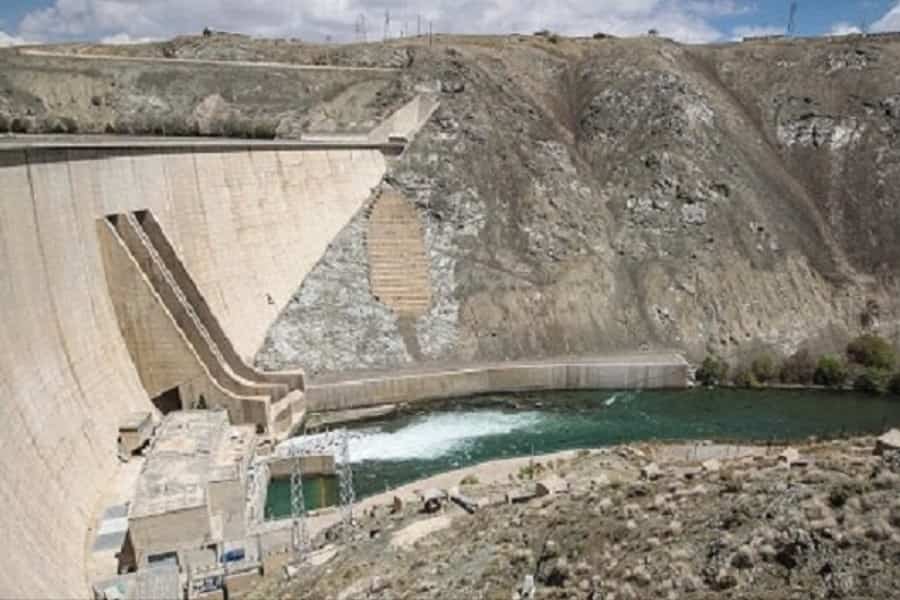
Reza Hajikarim, head of the Water Federation, has admitted: “Tehran’s ‘Day Zero’, the day when buildings are completely cut off from water, arrived long ago. Yet the city still holds the world record for land subsidence, caused by excessive extraction of groundwater resources.” (Jahan-e Sanat, August 6, 2025)
The Double Burden on Women
The catastrophe of water scarcity has profound social and economic consequences that affect millions of lives in Iran. Long and unplanned water cuts have paralyzed urban and rural life; agriculture has collapsed, livestock suffer from thirst, and families lack even drinking water.
Signs of water scarcity appear in family relations, household economies, physical and mental health, and the growing wave of internal migration.
Because of women’s traditional responsibilities, such as caring for children or the elderly, preparing food, maintaining hygiene, and managing gardens and livestock, they bear the greatest stress.
It is women who, from morning to night, must manage the crisis of water shortage. The psychological strain caused by repeated water cuts, long queues at water tanks, deteriorating hygiene for children and women, and rising water costs deprive them of learning opportunities, health, and leisure. These conditions lead to depression, chronic anxiety, rising family tensions, and domestic violence.
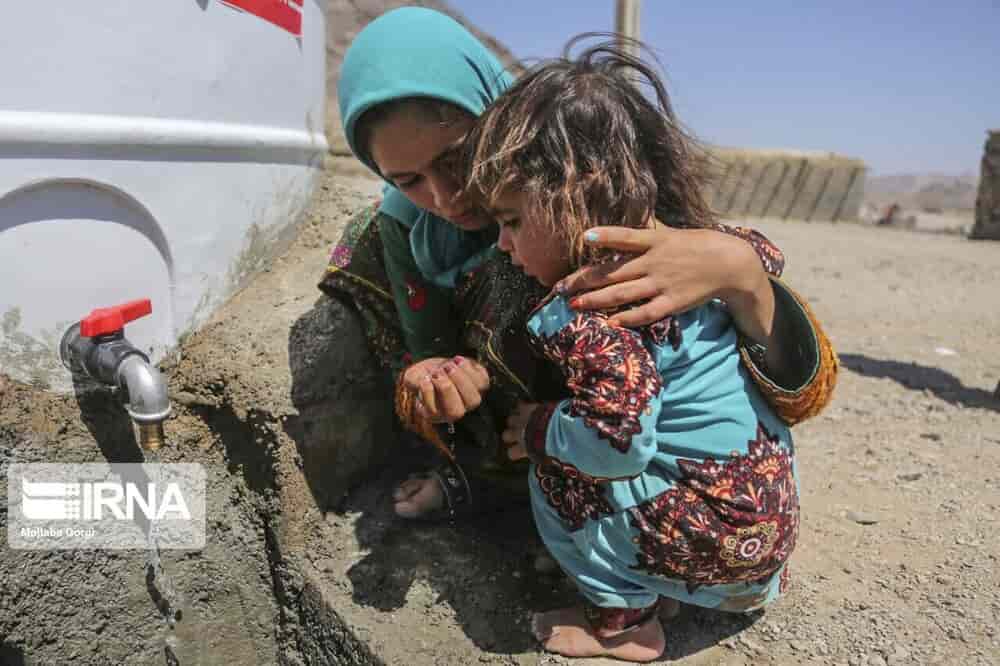
Water Shortage and Violence Against Women
Beyond household hardships, water scarcity also disrupts local economies and livelihoods, leading to widespread poverty. In turn, poverty contributes to child marriage, domestic violence, and various social harms. “One of the main causes of violence against women is poverty,” notes Jame’e 24. (July 31, 2021)
Salomeh explains:
“As our city’s economy worsened, education and healthcare declined too, and child marriage increased. Imagine how hard it is for a 15- or 16-year-old girl, already married, to deal with the water crisis, become pregnant, give birth, and care for her baby in these conditions.” (Radio Zamaneh, October 17, 2024)
This pattern is visible throughout Iran’s water-deprived regions, particularly in rural parts of Sistan and Baluchestan and South Khorasan, where the water crisis fuels school dropouts, child and forced marriages, and the neglect of women’s health and hygiene. (Bahre Vari Website, December 17, 2024)
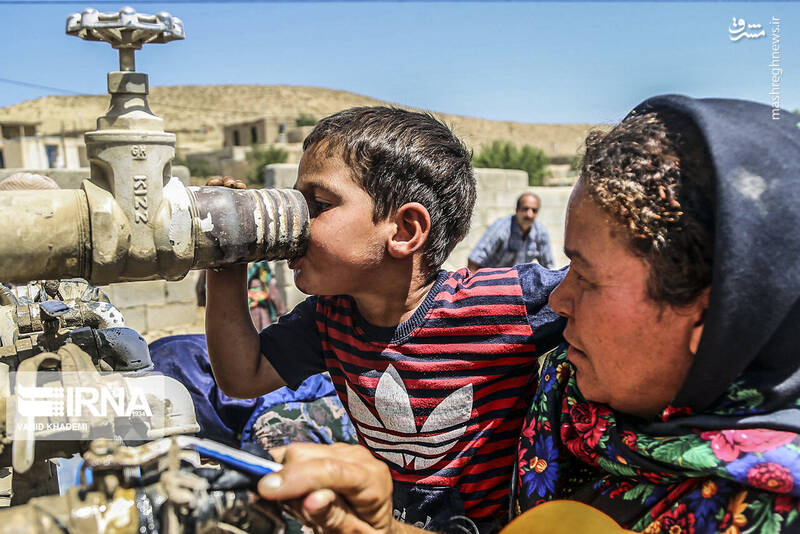
Women at the Forefront of Popular Protests
Water scarcity, as a driving factor, has escalated social tensions in Iran to unprecedented levels. The prominent presence of women in these protests is notable. Large-scale demonstrations in Khuzestan, which emerged in recent years due to water shortages and the drying of wetlands, continued in the summer of 2025. Instead of addressing the problem, the regime labeled protesters as “rioters” and, using military force, killed or arrested dozens of people. (Euronews – March 13, 2025)
Similar protests took place from May to August 2025 in various cities across Iran, including Shahr-e Kord and provinces in the south and center, with slogans such as “Water, electricity, life; it is our undeniable right” being chanted. (Wikipedia – August 11, 2025)
In Tehran, residents of Nasimshahr took to the streets on July 21 due to water shortages and three days of complete water cuts during the scorching heat of July.
Additionally, on July 23 and 24, Tehran and Eslamshahr witnessed anti-government protests in response to water and electricity cuts. In Tehran on July 23, protesters in several districts expressed their anger over the country’s disastrous situation with slogans such as “Death to Khamenei, curse on Khomeini,” “All these years of crimes, death to this regime,” and “Death to the dictator.” In Eslamshahr on July 24, the slogan “Death to Khamenei” echoed in response to repeated power outages. Similar protests were also reported on the same day in Marvdasht and Torbat Jam.
On Friday, July 25, the residents of Barzanun, Nishapur, also protested the ongoing water shortage by blocking the road. Villagers stated, “If there is no water, and if there is no response from the regime’s authorities, then the road should not be open either!” (Secretariat of the National Council of Resistance of Iran – July 25, 2025)
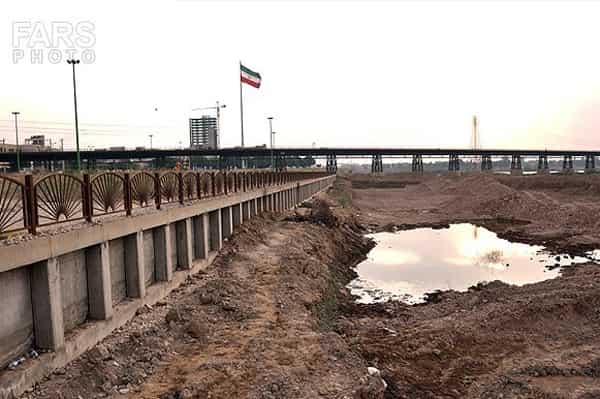
Final Word
The crisis currently referred to as an energy imbalance is neither sudden nor the result of climate change; rather, it is the cumulative outcome of corruption and policies imposed on the people, intertwined with the nature of a religious dictatorship. The water crisis is yet another of the countless reasons behind the political instability and the lack of legitimacy of the clerical regime.
Kaveh Madani, head of the Water, Environment, and Health Institute at the United Nations University, says: “If we pay attention to our country, we can see the signs of a serious, hard-to-treat disease, a severe infection, or even cancer in various sectors. One day we can’t breathe because of Tehran’s air pollution, another day it’s dust storms, another day the water situation, the status of an educational institution, the price of the dollar and the economy, the stock market, or industry. If we look closely, the signs of crisis are appearing across all sectors. Many of these issues share common roots. We must admit our failure.” (Etemad, July 26, 2025)
Repeated protests in Khuzestan, Isfahan, and other provinces, triggered by water shortages, reflect the growing anger of the people at the regime’s incompetence. The suppression of these protests, which has resulted in the deaths of demonstrators, has further fueled public outrage and weakened the foundations of the regime’s power.
Signs of a nationwide uprising aimed at overthrowing this illegitimate regime are visible everywhere. What concerns the international community and awakened consciences, however, is assisting the people of Iran in this critical endeavor. Recognizing the organized alternative of the Iranian people, who have fought for Iran’s freedom for decades, will not only accelerate the liberation of the Iranian people from dictatorship but will also bring peace and friendship to the free world.



